The Holy Face of Lucca, the celebrated and historic crucifix that has stood in the Tuscan city’s cathedral for centuries, is the oldest wooden sculpture in the West: the extraordinary discovery comes as a result of diagnostic investigations using the carbon-14 method, which have never before been carried out on the work. In particular, the sculpture can be dated to a period between the last decades of the 8th and the beginning of the 9th century. The examinations were conducted at the Florence headquarters of theNational Institute ofNuclear Physics CHNet - Cultural Heritage Network, on three wood samples of the sculpture and on a fragment of canvas applied to the wooden surface since its origin, and the result was hailed as resounding by the scientific community, not least because the discovery leads to the confirmation that it is the original Holy Face, and not a copy taken from a lost sculpture.
An ancient text, believed to be legendary, in fact reported the work’s arrival in Lucca in the year 782: however, art-historical studies agreed that the Holy Face was a 12th-century replica of a lost original. Of particular importance for the dating of this work is the result obtained from the examination of the canvass, placed between the wood and the painting, since the cutting of a plant fiber intended for weaving usually did not precede its processing by much, while the wood after the cutting of the tree may have undergone a period of seasoning.
“The samples,” explains Mariaelena Fedi, a researcher at the National Institute of Nuclear Physics, “were taken at different points in the work in such a way as to be able to check whether some points of the crucifix had been added at a time after it was first made. As a first step, the samples were treated and cleaned in such a way as to be able to remove any possible contamination: in fact, there could have been both resins present, perhaps used over the years as a protective or consolidating agent especially of the wood, but there could also have been, above all, natural substances such as calcium carbonate or remnants of organic traces that could go to contaminate the find. Carbon was then extracted from the material we cleaned, and this carbon was then converted into very small graphite tablets. The measurement of radiocarbon concentration was possible just by going and counting how many carbon 14 atoms were left in these very small graphite tablets. For this we used accelerator mass spectrometry, an accelerator mass spectrometry technique that relies on the use of small electrostatic particle accelerators. The experimental data tell us that the data we dated dates from between the last decades of the 8th century to the 9th century.”
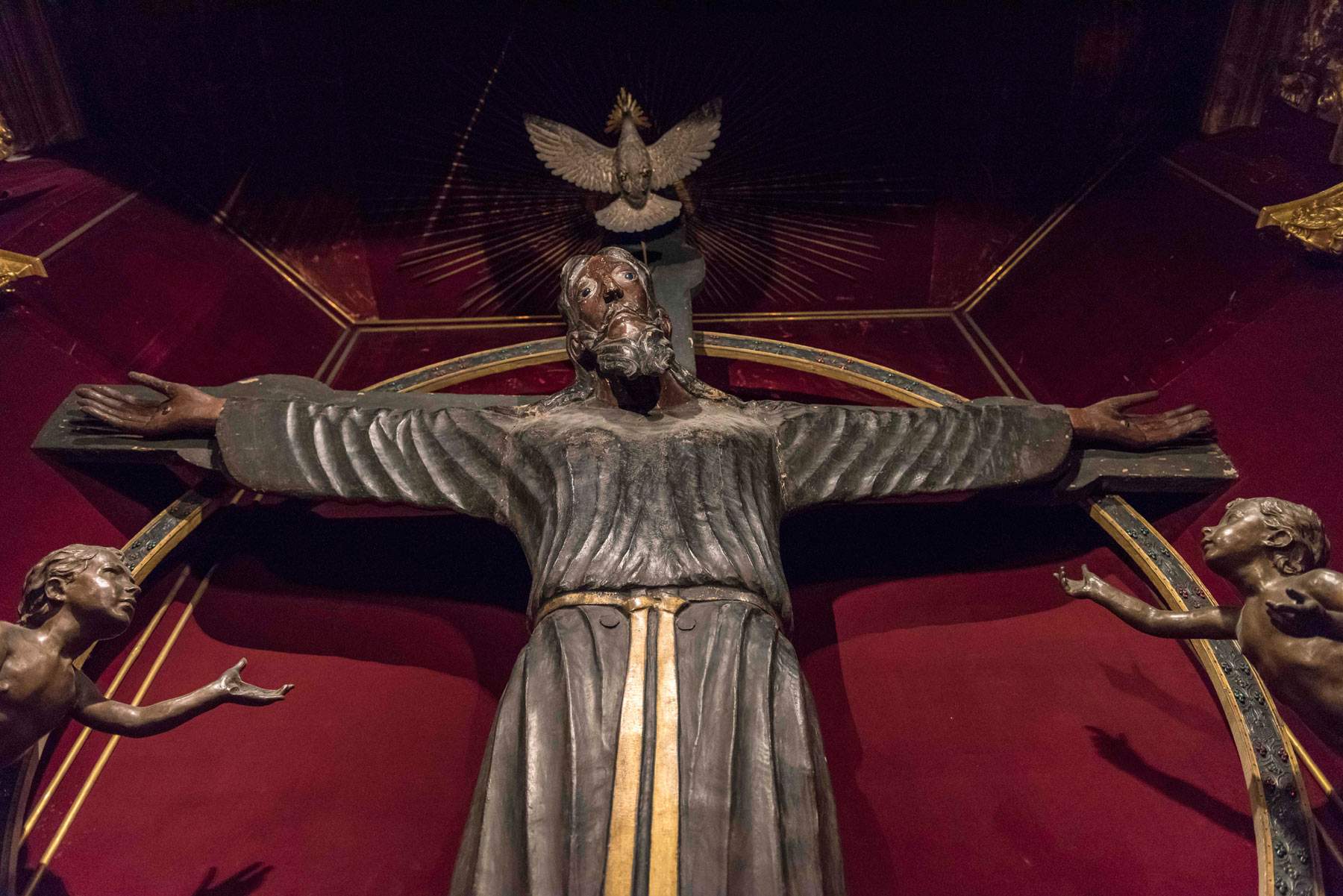 |
| Holy Face of Lucca (8th-9th century AD; Lucca, Cathedral of San Martino). Ph. Credit Lucio Ghilardi |
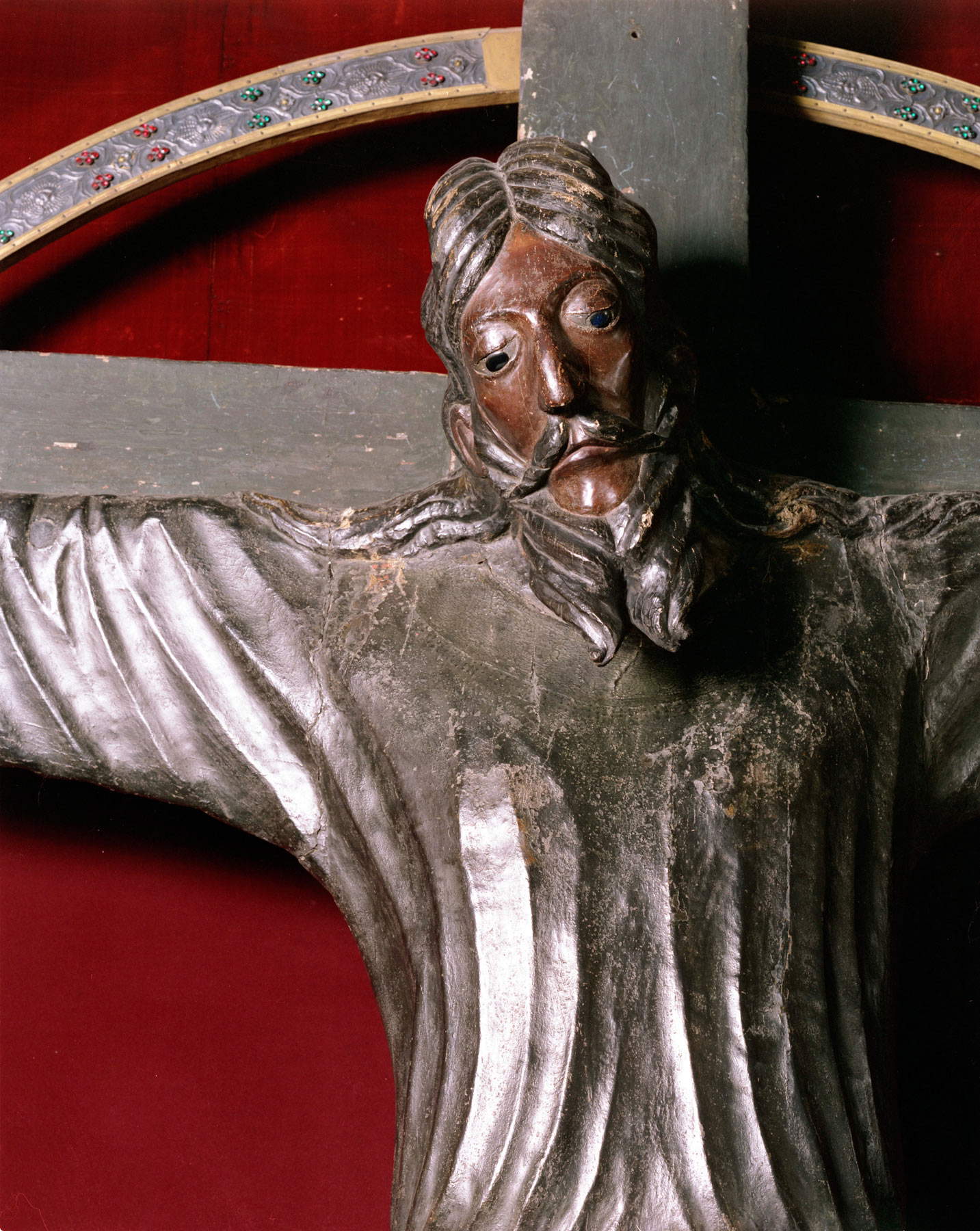 |
| Holy Face of Lucca (8th-9th century AD; Lucca, Cathedral of San Martino). Ph. Credit Lucio Ghilardi |
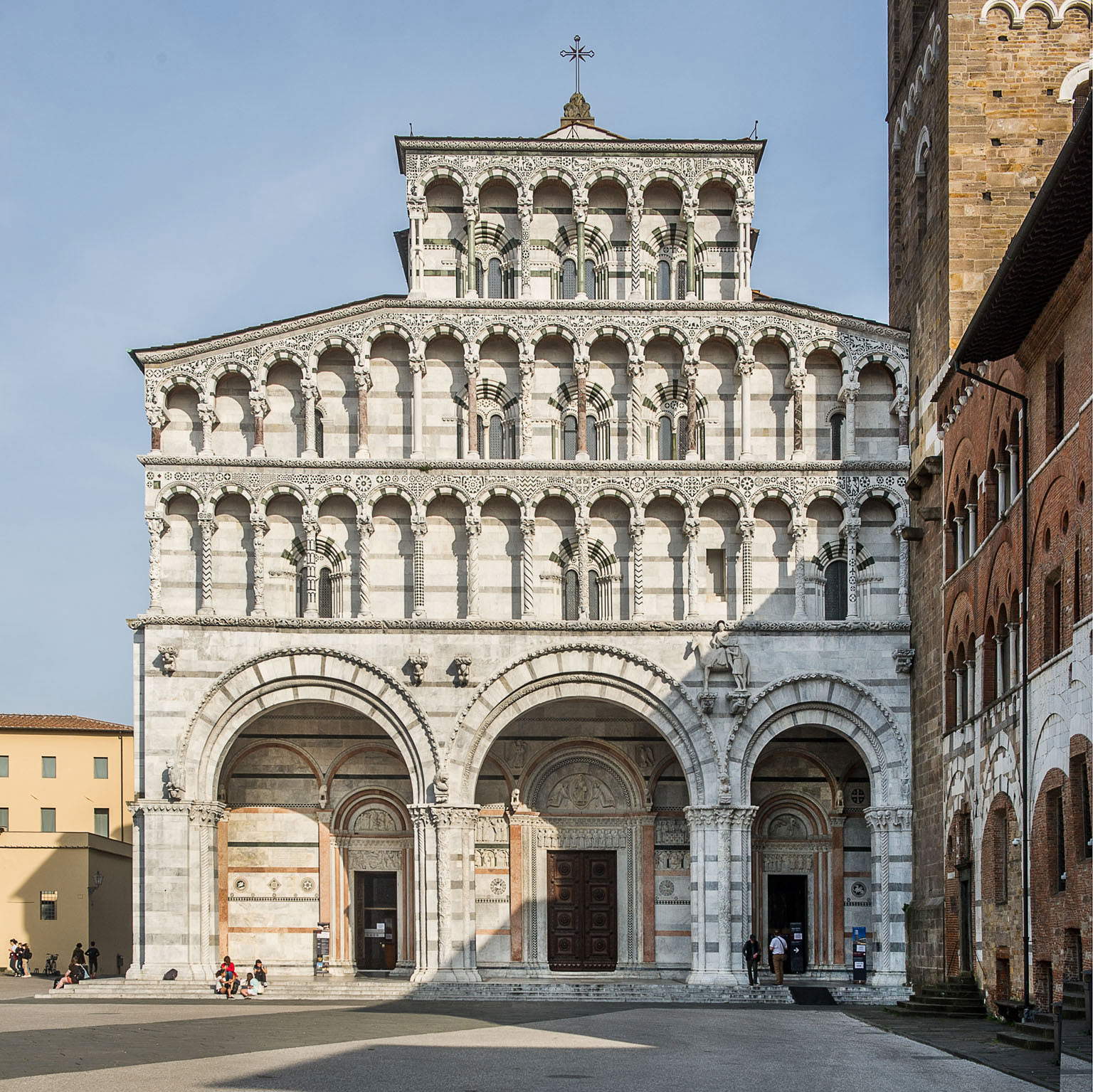 |
| The facade of the Cathedral of Lucca. Courtesy Tecnoservice, ph. Luca Lupi |
Investigations have had to wait a long time for a very simple reason: the Holy Face is considered above all an important object of worship, and for this reason, until recently, it was not possible to conduct analyses on the grandiose wooden crucifix (it is 247 centimeters high), the symbol of the city of Lucca, and among the most venerated icons of Christianity. Suffice it to say that, in the Middle Ages, the cult of the Holy Face spread throughout Europe, creating an uninterrupted stream of pilgrimages, along the Via Francigena, and a series of replicas still visible in different areas of the continent. The Holy Face was so famous that in England, in 1087, King William II took a solemn oath in the name of the Holy Face. Dante, too, would later mention it in the Divine Comedy, in Canto XXI of the Inferno, where a Lucchese magistrate damned in the bedlam of the barattieri (public administrators who derive non-legitimate personal benefits from their role) is apostrophized by some devils with the phrase “qui non ha loco il Santo Volto,” to be understood perhaps in the sense that, in Hell, one cannot appeal to the holy crucifix for clemency.
In ancient times, the Holy Face was considered miraculous, as well as an acheropite work (i.e., not made by human hand), and was thought to be the true image of Christ. In 1484, the great Lucchese sculptor Matteo Civitali (Lucca, 1436 - 1502) built a small temple, inside the Cathedral of San Martino, to preserve the work: in the crucifix, Christ appears dressed in a long tunic, and crowned. The iconography of the Holy Face would later be replicated in countless other works: paintings, frescoes, and sculptures found not only in Tuscany and Liguria (where, of course, for reasons of geographic proximity, the image of the Holy Face is widespread), but in much of Italy.
It is to the credit of the Superintendence of Lucca and Massa-Carrara laver implemented, in 2013, a first initiative in the direction of further scientific studies, in conjunction with the restoration of Matteo Civitali’s 1484 marble tempietto: at that time, non-invasive investigations were carried out on the sculpture (X-rays and multispectral analysis) that ascertained the presence of polychromy under the brown coloring that covers the sculpture (applied at an unspecified time, but in any case already present in the seventeenth century) and that today appears to be deficient and precarious in several areas. Currently, in addition to carbon 14 examinations, the Operadel Duomo di Lucca has commissioned the CNR Institute of Applied Physics in Florence to carry out investigations on the layers of color present on the surface of the sculpture, the results of which are awaited. A campaign is also underway to survey the microclimate inside the chapel of the Holy Face, which for a year will test the values for humidity and temperature, which are fundamental for the conservation of a wooden work.
The surveys were carried out on the occasion of the Celebrations for the 950th anniversary of the refounding of Lucca Cathedral, which after being interrupted due to the Covid-19 pandemic will continue in the fall: among the many planned initiatives (conferences, exhibitions, video projections), work will continue on the refurbishment of the Chapel of SantApollinare, where the tomb of Ilaria del Carretto, a masterpiece by Iacopo della Quercia, is kept (the project aims to restore the architectural features of the environment, which dates back to 1401, enhancing the marble monument thanks also to new lighting).
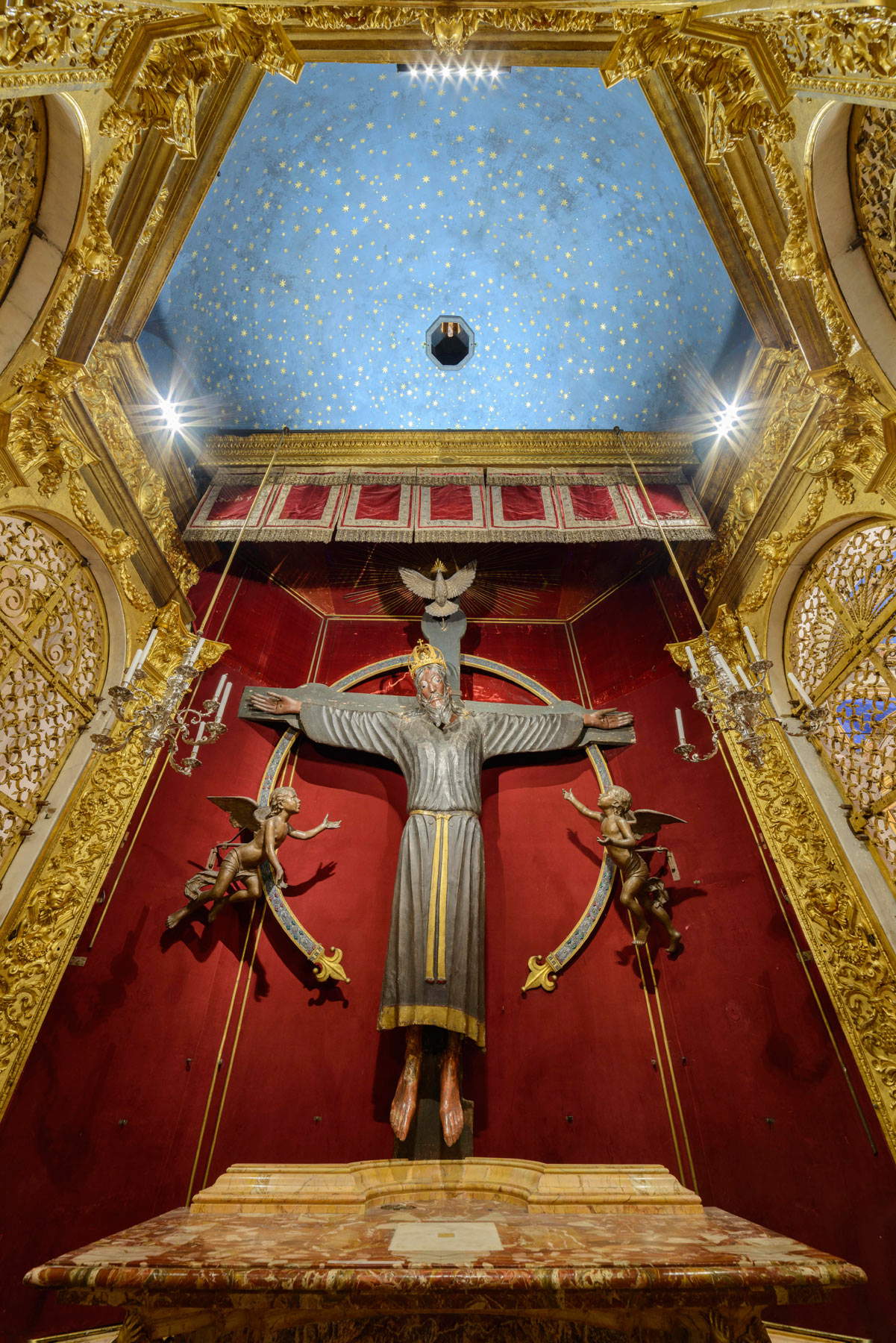 |
| The Holy Face of Lucca inside the small temple by Matteo Civitali. Courtesy Tecnoservice, ph. Luca Lupi |
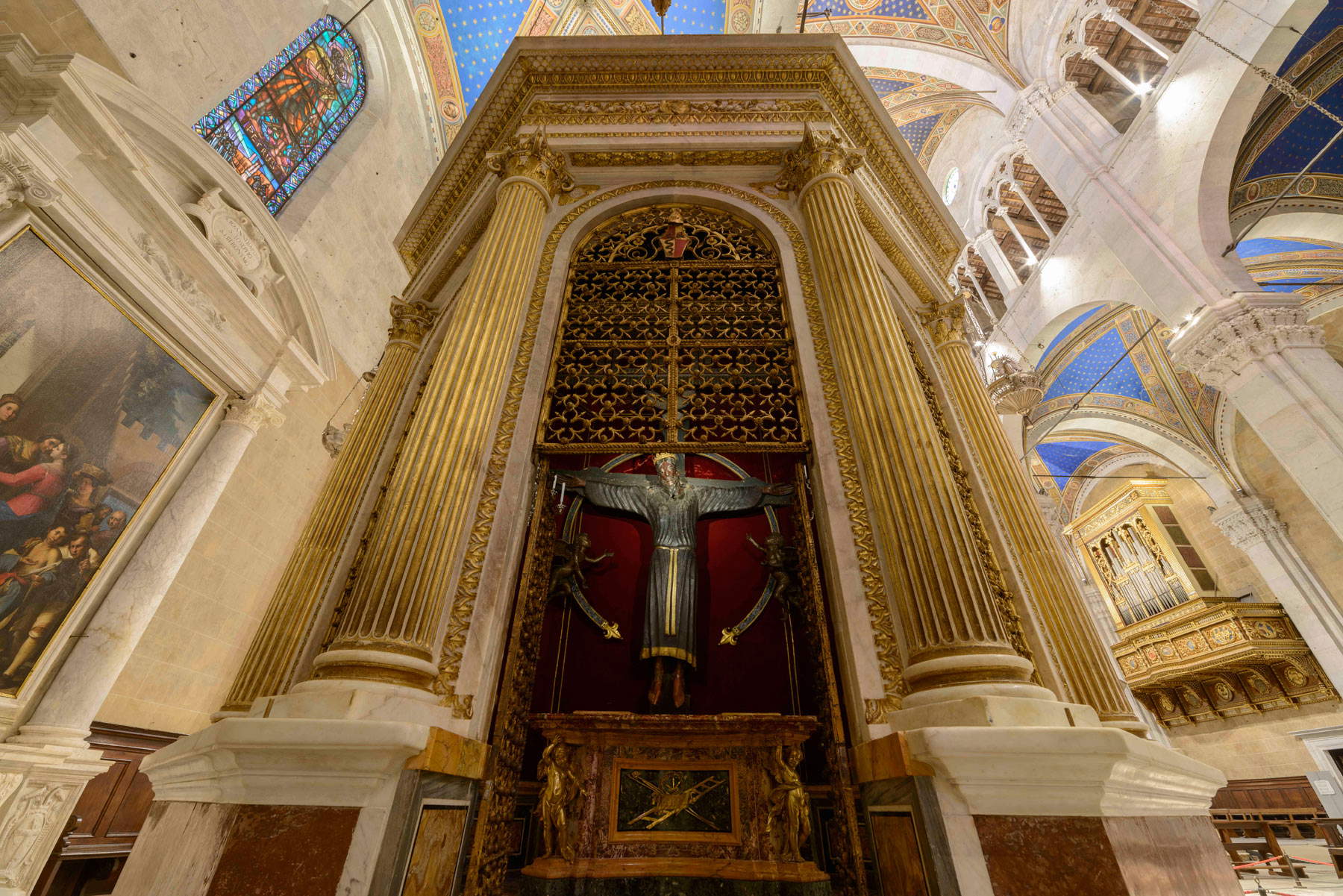 |
| The Holy Face of Lucca inside Matteo Civitali’s tempietto. Courtesy Tecnoservice, ph. Luca Lupi |
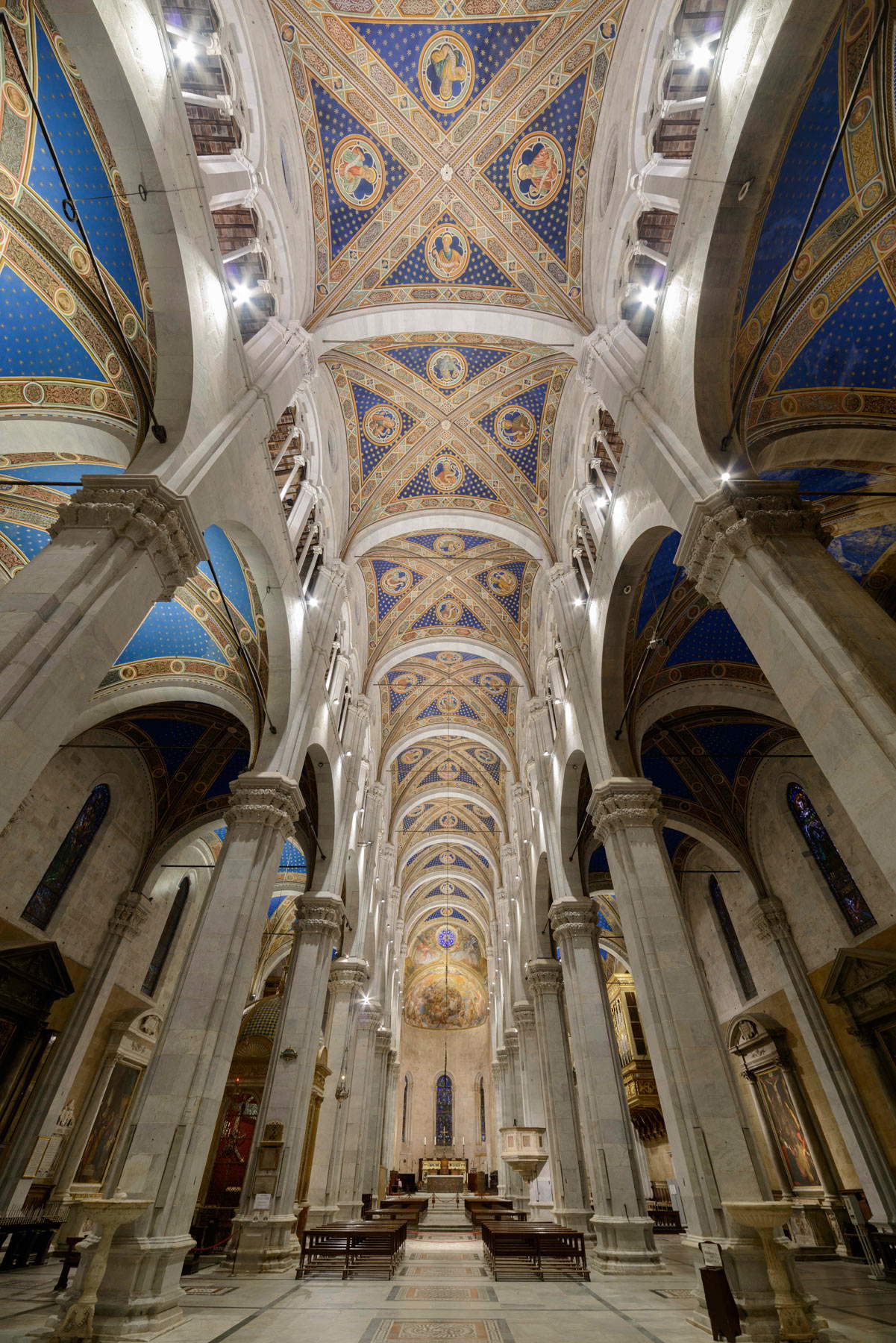 |
| Interior of the Cathedral of Lucca. Courtesy Tecnoservice, ph. Luca Lupi |
“For centuries,” explains Annamaria Giusti, scientific advisor for the Celebrations and former director at the Pietre Dure Works, “much has been written about the Holy Face, but always in terms of faith and religiosity. It was not until the 20th century that a vigorous critical debate about its dating and characters of style began. The prevailing opinion was that it was a work to be dated in the second half of the 12th century. Then, not being able to gloss over the fact that its existence is documented in older times (the first document mentioning it dates back to 1050), it was assumed that it was the second version of an older Holy Face, which was destroyed for some reason. At last, its ascertained antiquity closes the tedious and controversial issue about the time of execution of this work, which we can now consider the oldest wooden sculpture in the West that has come down to us.”
“For the Christian community of Lucca, thanks to the pilgrimages along the Via Francigena, and for all of Western Christendom,” says Paolo Giulietti, archbishop of Lucca, “the Holy Face is not just one of the many crucifixes with which our Italy and Europe is studded; it is a relic, that is, a living reminder of the crucified and risen Christ. It is a memorial that has its origins in antiquity, as today’s announcement confirms, and that has left indelible traces in the culture, in the spirituality of Lucca and the entire continent. Such an ancient image is still capable of saying today the message of Salvation that comes from Jesus of Nazareth, crucified for love and risen again in the power of God.”
“The presence of the Holy Face in the cathedral,” says Mauro Lucchesi, rector of the Cathedral of Lucca, “has always had importance as a reference also for the civic life of the Republic first and of the city later, to the point of being recognized and crowned as Rex Lucentium and whose image was reproduced on palaces, on the city gates, in official government acts and even on coins. Even today, the festival celebrated in his honor every year on September 13 and 14 continues to be the most anticipated and engaging event for the city and the territory.”
 |
| Extraordinary discoveries on the Holy Face of Lucca: it is the oldest wooden sculpture in the West |
Warning: the translation into English of the original Italian article was created using automatic tools. We undertake to review all articles, but we do not guarantee the total absence of inaccuracies in the translation due to the program. You can find the original by clicking on the ITA button. If you find any mistake,please contact us.